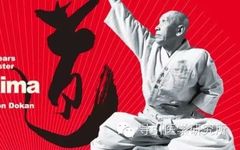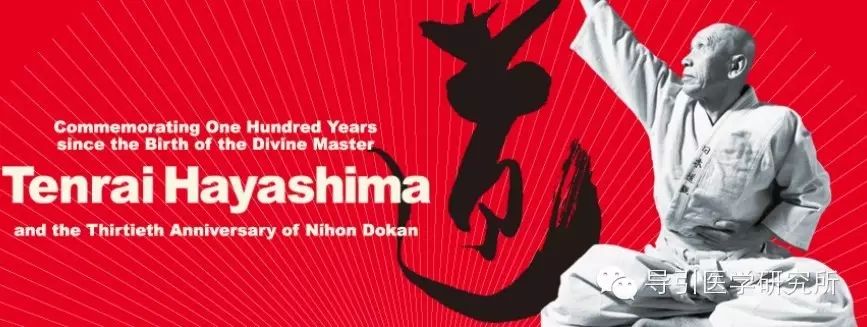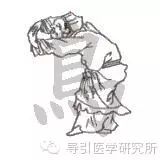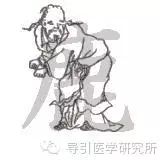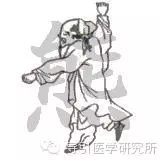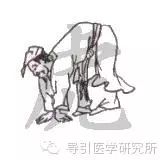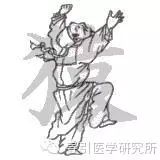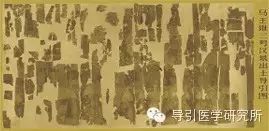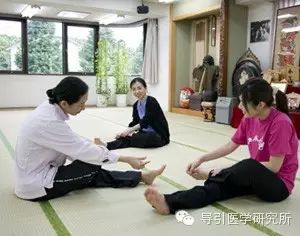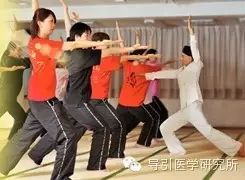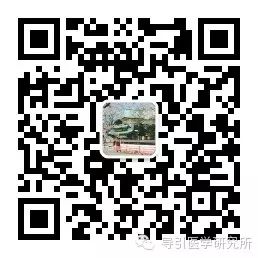|
Japan Taoist Academy Dao Yin Medical Research Institute Co., Ltd. General Incorporated Foundation Japan Taoist Association http://nihondokan.cn/ http://dougakuin.jp/ http://www.taoism.or.jp/ For sharing, please click the upper right corner, and for following, please click the blue text below the titleDao Yin Medical Research Institute. Thank you! |
|
Dao Yin: A simple practice of Qi for health and wellness!
Dao Yin: A practice with a history of five thousand years in China Dao Yin is a fitness method that originated in China five thousand years ago and developed throughout history as a practice of Qi. According to the oldest medical text in China, the Huangdi Neijing (Yellow Emperor’s Inner Canon), Emperor Huang, who unified the realm and established measurement and currency systems around 2700 BC, treated diseases through the sitting practice of Dao Yin. Additionally, the Zhuangzi records, “Exhale the old and inhale the new (through breathing, expelling turbid air and inhaling fresh air), like a bear climbing branches and a bird spreading its wings, this is for longevity, and this is what the practitioners of Dao Yin and those who cultivate their form prefer.” Dao Yin and Qi in health cultivation In modern society, the emergence of many unknown diseases has led people to reassess the value of Eastern medicine (Traditional Chinese Medicine, TCM). Some diseases that Western medicine cannot cure can surprisingly be treated by TCM, which has garnered significant attention in the medical community. Among these, the Dao Yin practice of Qi possesses two functions: health cultivation and disease treatment, which have evolved into daily practices embraced by the public. The origins of Dao Yin: Mimicking the movements of wild animals Ancient humans primarily lived through hunting, and to safely and effectively obtain prey, they had to ensure they were not attacked by fierce beasts, thus their breath had to coordinate with the movements of birds and beasts. To deal with bears, they adopted the bear’s posture; to confront tigers, they mimicked the tiger’s movements. Thus, humans began to imitate these postures to fend off strong enemies and master techniques to defeat them. Moreover, ancient humans noticed that wild animals did not fall ill or die from diseases, leading them to believe that by mimicking the movements of wild animals, they could achieve longevity and die without illness. They also recognized that bipedalism in humans was contrary to nature. After years of research, they confirmed that imitating the movements of wild animals could allow the Qi within to flow smoothly, greatly benefiting human health. Dao Yin emerged from this process. Hua Tuo’s Five Animal Frolics
During the late Eastern Han Dynasty, the famous physician Hua Tuo (circa 140-208) created the Five Animal Frolics, a health method based on the movements of five animals: tiger, deer, bear, monkey, and bird. Practicing the Five Animal Frolics can quickly eliminate fatigue and remove diseases, so Hua Tuo guided the weak and ill to practice daily. Both Hua Tuo and his disciples maintained their youth through this fitness method. Hua Tuo, nearing 100 years old, still appeared youthful, while his disciple Wu Pu remained sharp and vigorous even at 90. Hua Tuo is recognized as the first person in the world to use anesthesia, holding an important place in the history of medicine. It is recorded that he used a substance called Ma Fei San (麻沸散) for anesthesia during abdominal surgery, and the patient fully recovered after a month. The Dao Yin Diagram unearthed from Mawangdui In 1973, a large number of wooden slips and silk books were excavated from the Mawangdui Han Tomb No. 3 in Changsha, Hunan Province, China. Among them, a silk book recorded a medical work on diseases titled Fifty-Two Disease Formulas, where the Dao Yin Diagram was discovered, causing a significant stir in Japan.
This Dao Yin Diagram depicts 44 types of Dao Yin practices, reflecting the importance placed on health by individuals of certain status at that time, and proving that people had already begun practicing Dao Yin as early as the 2nd century BC. The discovery of the Dao Yin Diagram is of epoch-making significance. Additionally, Tomb No. 1 also unearthed the remains of a noblewoman. Perhaps due to practicing Dao Yin, her body remained supple and radiant even after 2000 years, and upon seeing the published photos, people worldwide were amazed. This indicates that the ancient Chinese possessed advanced techniques for body preservation. Dao Yin’s transmission to Japan The practice of Dao Yin originated in China over five thousand years ago and has undergone a long historical development. It is said that Dao Yin was transmitted to Japan via the Korean Peninsula. Historical records indicate that the famous naturalized citizen Wang Ren, born in Baekje, presented the Analects and Thousand Character Classic to the court, along with a martial arts text titled Ping Fa Xue, which described Dao Yin. The book Ping Fa Xue was later passed down by the warrior Shiraishi Saburo Yoshimitsu (1045-1127) of the Seiwa Genji clan to the famous commander of the Setouchi navy, Murakami Genji. Ping Fa Xue was promoted as a method for soldiers on narrow boats to strengthen their health, and it eventually reached the ancestors of the first Taoist priest of the Early Island, the Okasaka family. Later, the first Taoist priest of the Japanese Taoist Academy, based on his experiences treating many suffering from diseases, systematized Dao Yin based on the Zhuyuan Kou Houlun (诸病源候论) written during the Sui Dynasty, one of the highest standards of Chinese medicine, combining it with the characteristics of modern people to form a unique, easy-to-understand, and easy-to-master system of Dao Yin. The current state of Dao Yin Taoism advocates that if one can eliminate physical aches, then mental fatigue will also dissipate. If one can eliminate mental fatigue, they will not be bound by anything. By following the natural flow of Qi within, one can shape a self that is not constrained by oneself. Practicing Dao Yin not only strengthens the body but also allows one to merge with nature, deeply feeling the existence of Qi and practicing the philosophy of a natural life in harmony with the flow of Qi.
In summary, Dao Yin can be described as a form of exercise that eliminates physical aches, muscle tension, and blockages in the flow of Qi. You may not think much of physical aches, muscle tension, and blockages in Qi, but if these issues can truly be resolved, the body will be full of vitality, and diseases will have no chance to invade, which is the most natural state. Dao Yin stimulates acupoints by coordinating breathing and slowly moving the body, making the flow of Qi within more active, and quickly expelling harmful substances (waste, pathogenic Qi) retained in the body. Although Dao Yin has a long history, it has gradually been forgotten in the long development process. The Japanese Taoist Academy has combined the characteristics of modern life to realize the revival of Dao Yin, helping people effectively master it in a short time. Dao Yin can be practiced daily at home, making it easy to maintain and a treasure for our lifetime.
|
